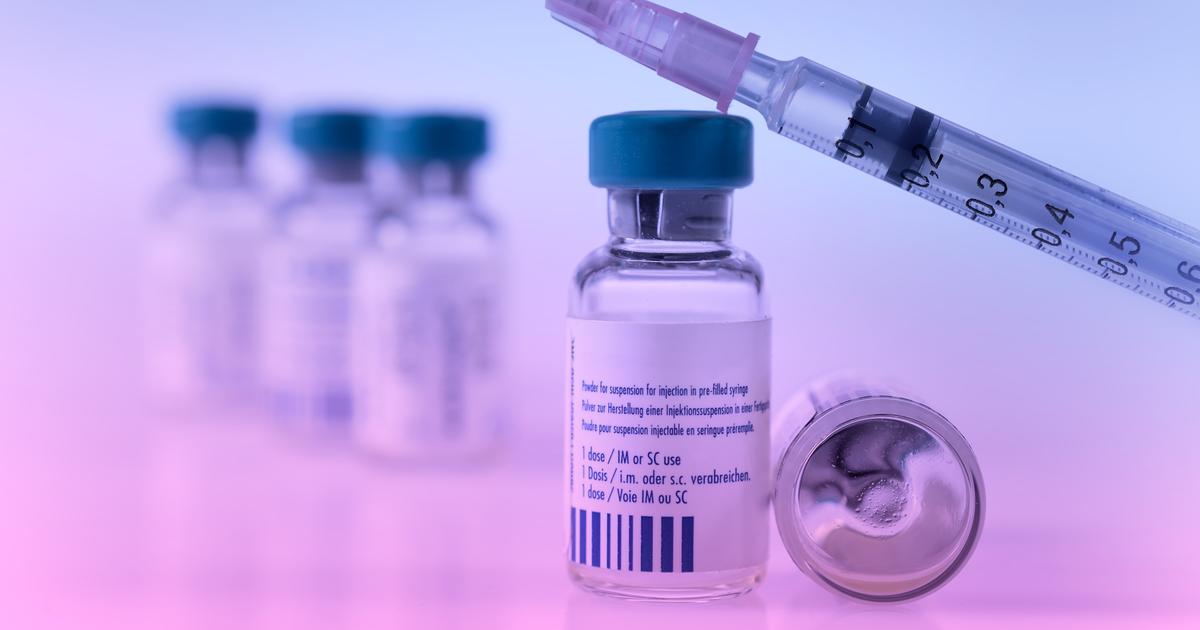A vaccine ... but no needle.
This could help increase the percentage of the population vaccinated.
Since the start of the pandemic, plans to vaccinate against Covid-19 using patches have multiplied, testifying to a movement that could well revolutionize the way vaccines will be administered in the future.
The technique will be able to avoid a few bursts of tears for some children, who are not very fond of syringes.
But above all, it has many other advantages, particularly in terms of distribution or increased efficiency.
A study in mice, published Friday in the journal Science Advances, found promising results. The patch used: a 1cm by 1cm square, made of plastic, with over 5,000 tiny peaks on its surface, "so small you can't even see them," described Dr David Muller, co-author of the patch. study and virologist at the University of Queensland, Australia.
These tips have been coated with the vaccine, which is deposited on the skin when it penetrates it. The patch is put on using an applicator (which looks like a hockey puck). The sensation is only that of a flick, or a piece of scratch pressed against the skin. The researchers used here a so-called subunit vaccine, reproducing a protein specific to the SARS-Cov-2 virus: the spike protein. Mice were vaccinated with the patch (applied for two minutes), and others with needles.
For the first, "we obtained a very strong antibody response, including in the lungs, which is important for Covid-19", detailed the researcher.
The results obtained have largely "surpassed" needle vaccination, he says.
Secondly, the efficacy of a single dose was evaluated.
By using an adjuvant, which serves to stimulate the immune response, the mice "did not get sick at all".
Easy to administer
Why such efficiency?
Vaccines are usually given by intramuscular injections.
But the muscle does not present "many immune cells, required to support the vaccine", compared to the skin, explains Dr. Muller.
In addition, the insertion of the tips causes tiny injuries, which alert the body of a problem and thus stimulate the immune response.
For the scientist, the advantages of the technique are clear: first, the vaccine can remain stable for a month at 25 ° C, and a week at 40 ° C (compared to a few hours at room temperature for the vaccines from Pfizer or Moderna ).
This allows less dependence on the cold chain, which constitutes "a challenge for developing countries".
In addition, “it's incredibly easy to administer”: no more need for trained nursing staff.
Burak Ozdoganlar, professor of engineering at Carnegie Mellon University in Pittsburgh in the United States, has also been working on these patches since 2007.
And he sees another benefit: "a smaller amount of vaccine, delivered precisely to the skin, can produce an immune response similar to an intramuscular injection," he says.
An important factor as countries battle for doses.
He can produce 300 to 400 patches per day in his laboratory, but regrets not being able to test the messenger RNA vaccines from Pfizer or Moderna with, because he is not authorized to do so by these groups.
" The future "
The patch used in the study published on Friday was made by Australian company Vaxxas, the most advanced in the industry. Phase 1 clinical trials are planned from April. Two other American companies have also launched: Micron Biomedical, and Vaxess. The latter, founded in 2013 and based in Massachusetts, is working on a slightly different patch. The vaccine is placed in the very tips, which dissolve in the skin to release it.
"We are working on a seasonal vaccine against Covid-19 and the combined flu, which will be mailed directly to patients for them to administer themselves," CEO Michael Schrader told AFP. . The anti-Covid vaccine used will be that of the Medigen company, authorized in Taiwan. Vaxess has just opened a factory near Boston, with funding from the US National Institute of Infectious Diseases (NIAID). The goal: to produce enough patches to vaccinate 2,000 to 3,000 people in clinical trials, which are to be launched next summer.
Because production capacity remains the real obstacle to the advent of this technology, which could be used for many other vaccines or drugs.
“If you want to launch a vaccine, you have to produce hundreds of millions.
And we don't have that scale today.
Nobody has it, ”explained Michael Schrader, who predicts the first products to hit the market in the next three years.
But the urgency of the pandemic has given a boost, he says, by attracting investors.
"From my point of view, it's the future, it's inevitable," insists the boss.
“In the next ten years, we will see a radical overhaul of the means of distributing vaccines around the world.
"









